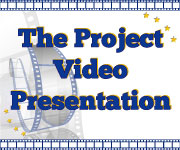basic information
THE INITIATIVE PROMOTER’S PERSPECTIVE
English was introduced to learners in the 3rd form in 2004. Teachers’ Resource Centres in Denmark lend sets of books and audio/visual materials to schools.
Teachers found new theories of MI and learning styles interesting – a new way of understanding learner variables and how to cater for learner differences in the classroom.
To promote the idea of learning in multiple ways and to enhance the dialogue/conversation about preferred ways of learning:
in the classrooms – among colleagues at school – with colleagues visiting our Teachers’ Resource Centre – at the in-service seminars.
The material The English Corner is designed so that it adapted to early language learning from grade 3-5. It is packed in fine suitcases that can be used in class. There are both cards with letters, books with stories, specific English items such as a Bobby helmet and Winnie the Pooh-bear, and in addition there are picture dictionaries, drama equipment and much more.
The material is designed for early language learning in school. It is developed from the theories of multiple intelligences and learning styles. One of theses is that 25% of all children are kinesthetic. This means that they learn best by touching and doing things actively.
I showed a framework of The English Corner to the head of the Resource Center and she gave me a budget of 5000 Danish crowns to develop it.
As it should be a material to be lent for use in different schools, it had to be easy to handle, unpack and repack. It must also be in a format that would suit our distributor: 5 big boxes and 1 smaller box. The Teachers’ Resource Centre (Center for Undervisningmidler) has a van/lorry visiting each school in our area once a week.
The different components and the lay-out is based on literature about learner autonomy, Multiple Intelligence and Learning Styles - and the experience I had as a practising teacher, as an adviser and in-service-teacher trainer.
The English Corner was used and evaluated in one of my own English classes before release.
The English Corner has been a great success. A huge number of schools have wanted to work with and use the material.
There have been positive qualitative evaluations from conferences and seminars giving students and teachers inspiration and eagerness to use the material.
Copies of the material were made in schools and other resource centres. For this purpose I have provided a detailed description of what exactly is in the boxes, where I bought everything and the cost.
Recommendation from colleagues.
The award on display in our centre – and on the English Corner boxes
The award encouraged me to design a Danish version of the European Language Portfolio that was tested on 15.000 learners and their teachers. Revised and used by another 15.000 learners aged 9-13 (A1 and A2)
Knowledge about European/national priorities.
The Danish National Agency has got information for inspiration on their web-site about the Labels that have been awarded. Danish media have not shown interest as far as I know. That would be wonderful and great to promote respect for language teaching.
THE NELLIP NETWORK’S PERSPECTIVE
The English learning material The English Corner meet with the policies especially in the field of the needs of young learners, since it focuses on multiple intelligences and learning styles. The material has proved to be a source of inspiration to teachers and students in teacher training. The detailed description of the contents in the boxes gives the material transferability and flexibility for teachers and educational institutions. The material motivates and inspires young learners to improve their language learning.
Comments on this Case Studies
Date: 2014.10.18
Posted by Lieselotte Wengberg (Sweden)
Message: The idea with the English corner suitcases is both simple and genius. Every classroom with young learners of English should have one!
